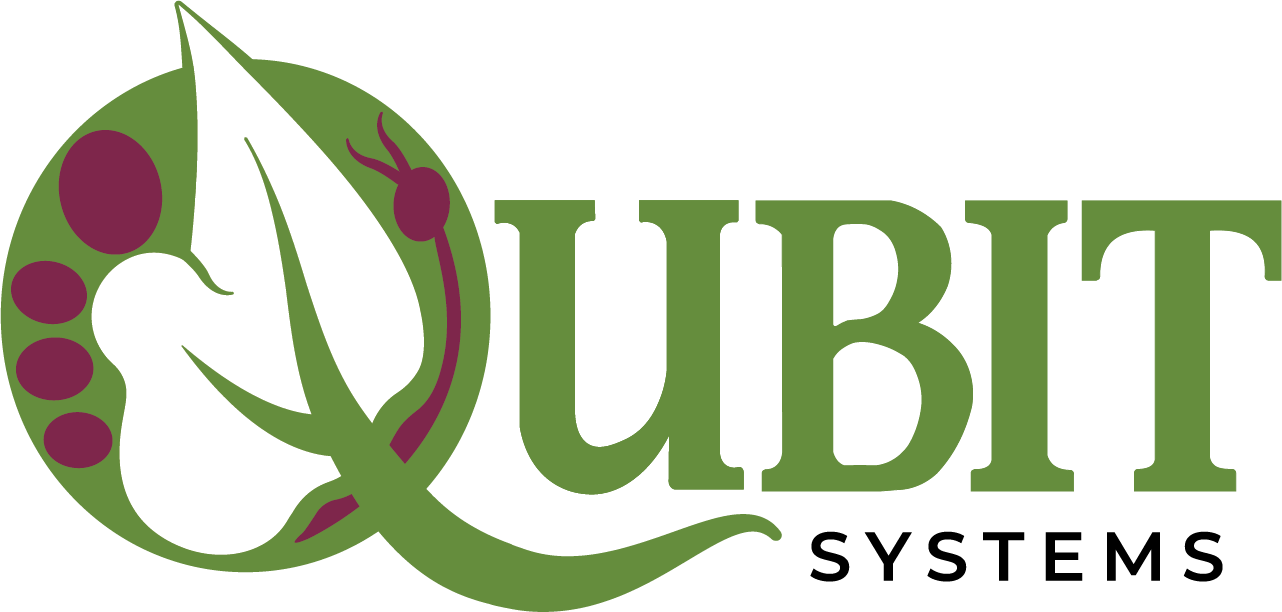
Few Words from the CEO
Several years ago, I was given the job of teaching Biology 101. There were 1200 university students in my class, all of whom had to do a practical course. The equipment in the existing labs could have been designed by Otto Warburg (bright chap, but technologically outdated), so with my colleagues I developed inexpensive sensors for measuring plant and animal physiological processes. That was the advent of Qubit Systems. The fun began when I asked students to come up with their own mini research projects. One likely lad stated he’d like to figure out what happened to a soybean plant when he peed on it. OK, I said, but I want you to develop a hypothesis and then test it, with appropriate replicates and controls. Next day, a bucket appeared in the Gents with a sign reading “Please Give Generously,” and over subsequent weeks measurements were made of N2 fixation, photosynthetic rate and plant growth using Qubit teaching equipment. The course ended before the experiment could be completed, but the student begged to continue it at weekends. Few years later, a paper was published (not by my student) on the use of human urine as a fertiliser for cucumber plants (CLICK). All of which goes to show that if students are given the freedom to pursue their own ideas, and the equipment to do so, they can fall in love with biology.
Best Regards


Q-teach Packages for Biology Laboratory Education
Qubit’s teaching packages have evolved over the years to include equipment for studying numerous aspects of plant, insect, animal, human and aquatic biology, and are used in teaching labs throughout the world. While we provide all the hardware, software and experimental designs for new and experienced teachers to plan engaging and successful laboratory investigations, we hope that those teachers with the time and inclination will give their students free reign to pursue their own ideas, however crazy their hypotheses. There’s no such thing as “bad” data, just shoddy experimental design and poor data interpretation – provided measurements are accurate. Qubit instrumentation guarantees the latter, and a whole lot of fun in the lab (and field).
Q-teach Animal CO2 Package (from $3,450 US)
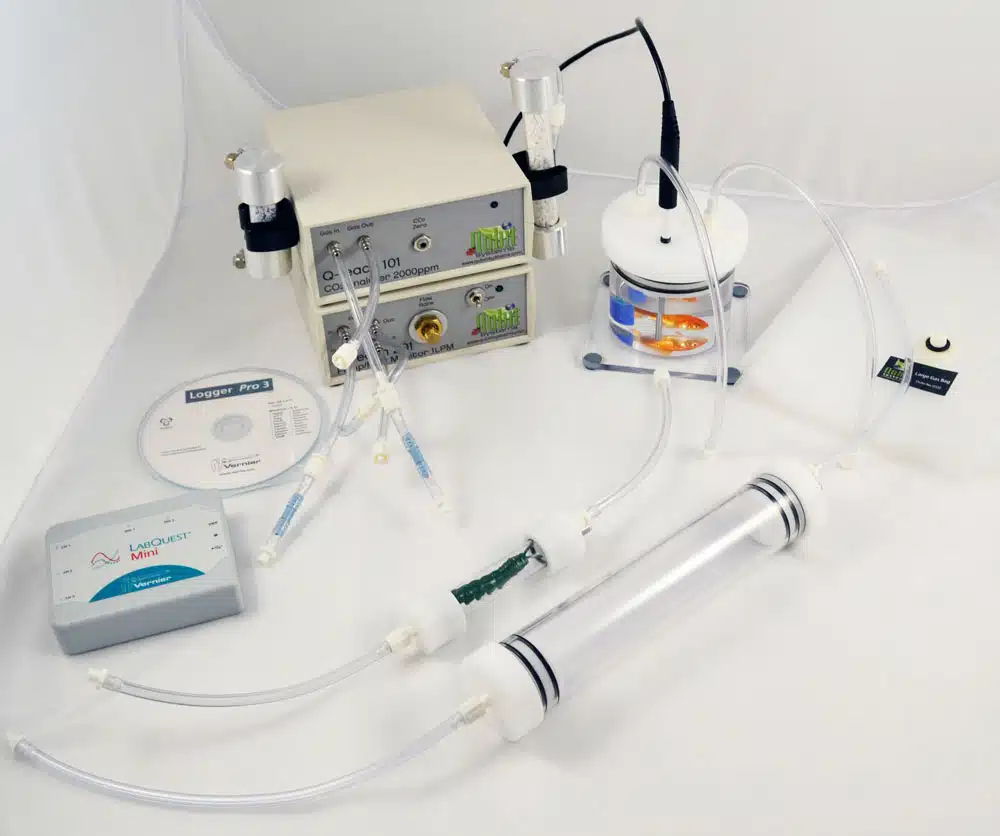
Equipped with Qubit’s teaching NDIR CO2 analyser, flow monitor, pump, temperature sensor and sample chambers, the Q-teach Animal CO2 Package is used to monitor metabolism and investigate the physiology of insects, lizards and other small animals. LoggerPro software, included with the package, provides graphical display of all data. LoggerPro has numerous built-in mathematical functions for easy and intuitive data processing. Data are saved in spreadsheet format and may be exported to Excel or other spreadsheet programs, if desired. LoggerPro comes with a site license for the purchaser’s department.
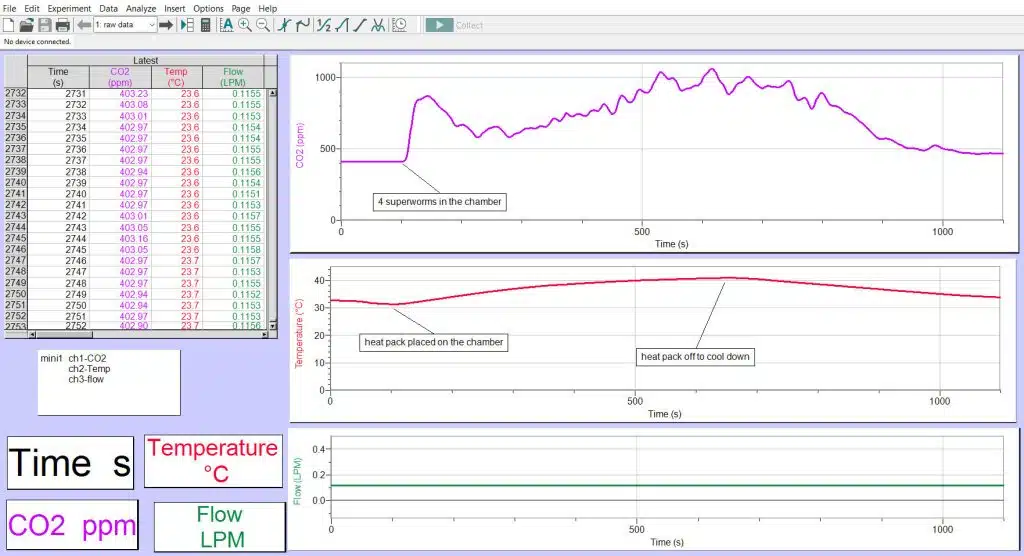
Q-teach packages are extremely flexible. Other sensors and analysers may be added to the package if required, such as the Q-teach O2 analyser ($805 US). Qubit can also provide a range of additional sample chambers for insects, small animals and aquatic organisms. Learn more about Q-teach Animal CO2 package HERE. For more active and larger animals (mammals, birds) consider Q-teach Animal CO2 and O2 package (HERE).
Q-teach Plant CO2 Package (from $4,600 US)
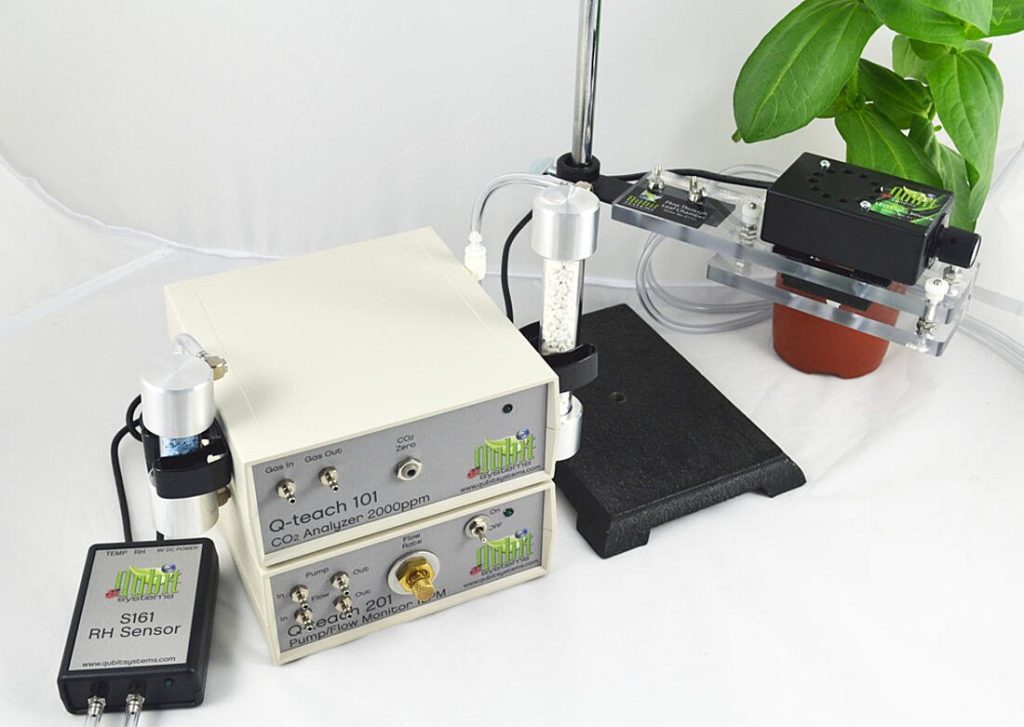
The Q-teach Plant CO2 package includes Qubit’s teaching NDIR CO2 analyzer, pump, flow meter, variable LED light source, relative humidity sensor and leaf chamber to investigate photosynthesis, evapotranspiration, and (photo)respiration in plants. Refillable gas bags provide a stable source of ambient air, and can be used to mix different levels of CO2. Additional chambers can be provided to monitor root and soil respiration. Example experiments include:
- Measurements of photosynthesis and evapotranspiration at different light intensities.
- Measurements of CO2 dependence of photosynthesis.
- Physiological comparisons of sun and shade plants.
- Physiological comparisons of C3 and C4 plants.
- Temperature effects on root and soil respiration.
Learn more HERE.
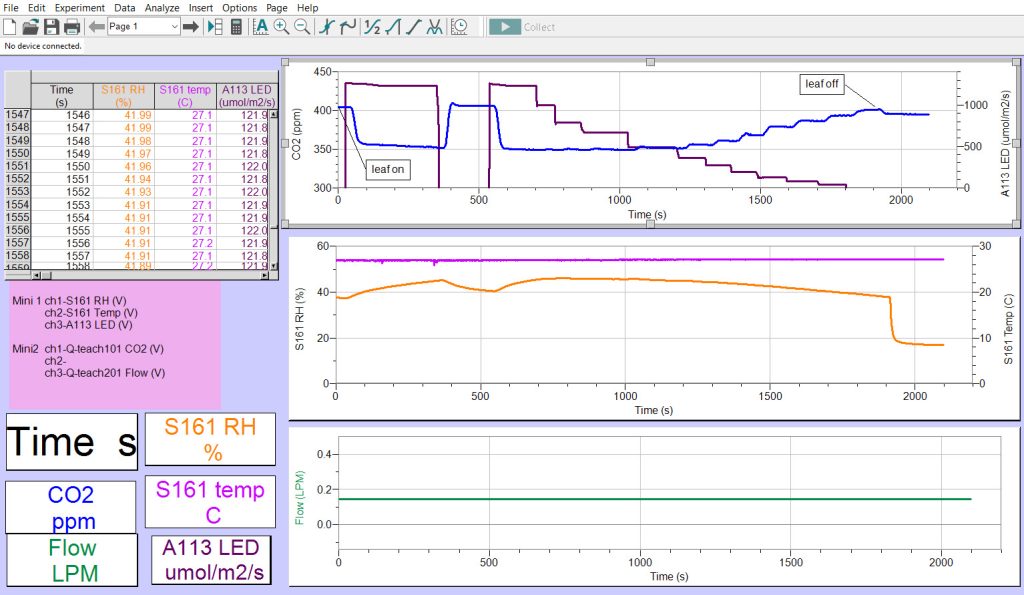
Other Low -Cost Equipment for Teaching and Research
Q-Box AQUA (from $6,700 US)
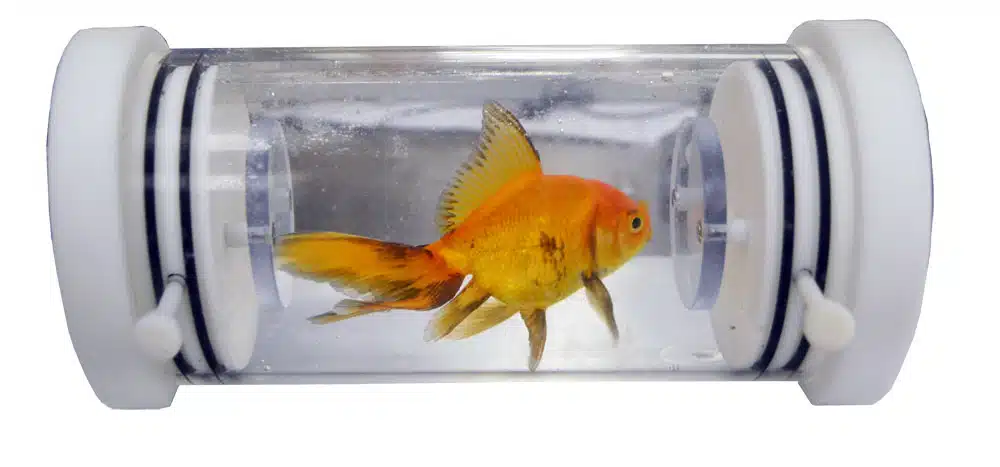
The Q-Box Aqua is used to measure metabolic O2 consumption by intermittent flow respirometry in which measurements are made sequentially without removing the fish (or other aquatic organism) from the chamber. The chamber is flushed with fresh water between measurements. Dissolved oxygen data corrected for salinity, temperature and pressure are displayed in software and used to calculate VO2. All of the components of the Q-Box AQUA Package are housed in a rugged weather proof case for easy transport and storage. Learn MORE.
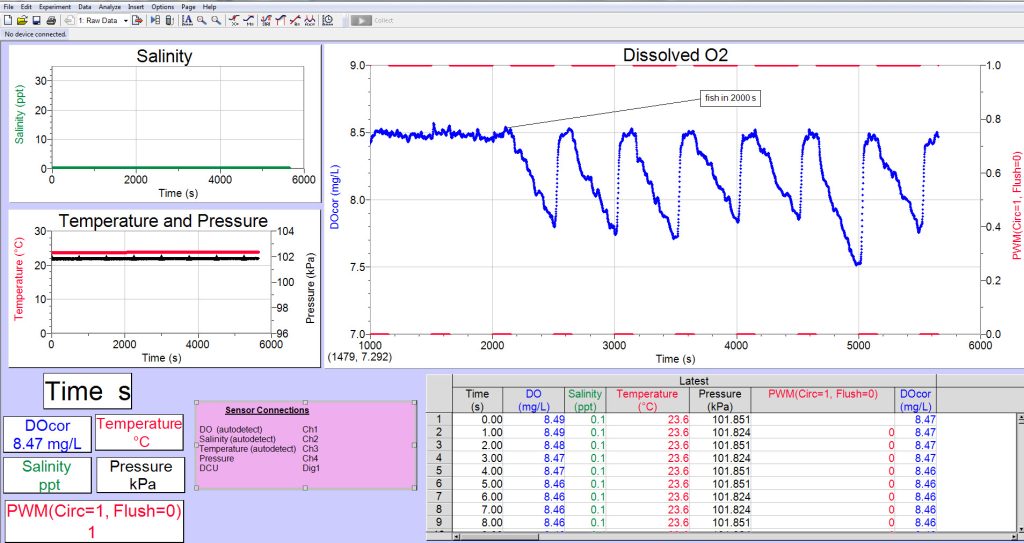
Mini-AQUA for Small Samples
For aquatic respirometry measurements of small fish and insect larvae (~1g) Qubit offers the Mini-AQUA package, a modified version of the Q-Box AQUA with small aquatic respirometer chamber (9mL) and components for smaller total volume system. The mini-AQUA package also features a micro-chamber (1.23mL in volume) with a DO probe inserted in the top portion for measurements of VO2 of very small samples such as larvae and juvenile fish less than 0.5g. The micro-chamber is used in the intermittent stop flow mode resulting in higher sensitivity and resolution of the system.
References
- Osterheld K et al. (2023) Triploidy in Mytilus edulis impacts the mechanical properties of byssal threads. Aquaculture 566: https://doi.org/10.1016/j.aquaculture.2022.739191
- Lucey NM, Collins M, Collin R (2022) Physiological, biochemical and genetic responses of black tiger shrimp (Penaeus monodon) to differential exposure to white spot syndrome virus and Vibrio parahaemolyticus. Aquaculture 546: https://doi.org/10.1016/j.aquaculture.2021.737337
OX1LP Dissolved Oxygen Package (from $3,950 US)
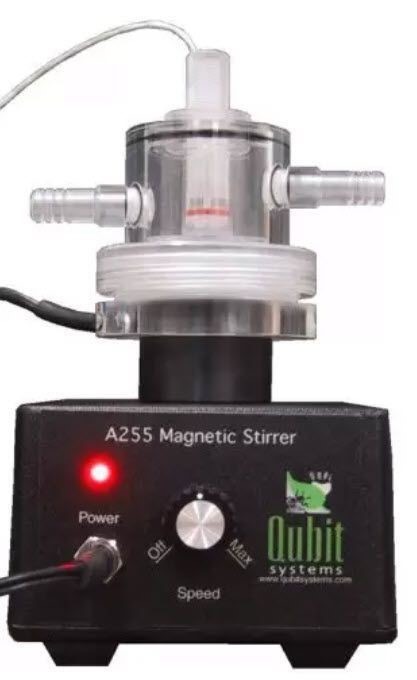
Qubit’s OX1LP Dissolved Oxygen Packages incorporate a polarographic dissolved oxygen electrode to measure photosynthesis and/or respiration in the aqueous phase, using suspensions of plant or animal cells, organelles (chloroplasts and mitochondria), invertebrates or algae. These packages may also be used to monitor chemical and biochemical reactions that either produce or consume O2 in the aqueous phase. Interchangeable water-jacketed cuvettes with volumes of 1.0, 2.5, 4.0, 6.0, 30 and 50 mL may be supplied with the system. Each uses the same O2 electrode base and stirrer. Learn MORE
References
- Nair P et al (2023) Temperature responses vary between riffle beetles from contrasting aquatic environments. Journal of Thermal Biology 112: https://doi.org/10.1016/j.jtherbio.2023.103485
- Nair P, Huertas M, Nowlin WH (2023) A broad-spectrum synthetic antibiotic that does not evoke bacterial resistance. eBioMedicine 89: DOI: https://doi.org/10.1016/j.ebiom.2023.104461
Click HERE to learn about all of Qubit’s Aquatic Biology and Aquatic Control Systems
The quality of their systems is equally matched by the service that they provide. They offer a personal, friendly touch to service that is not often found by companies today. I almost feel as though they are family. Qubit offers the absolute best service and support of any company that I have encountered in my 27 years of teaching.Dr. Janice M. CoonsProfessor of Botany, Biological Sciences Department, Eastern Illinois University, Charleston, IL
We purchased twenty Respiration Packages with support from the Howard Hughes Medical Institute. With minimal training, all 150 student teams were able to measure the effects of temperature on respiration rates in mice and lizards. The Qubit Respiration Package certainly works as advertised.Dr. Bob HodsonDepartment of Biological Sciences, University of Delaware, Newark, Delaware
The system has enough built in flexibility to allow students to make many of their own reasoned decisions regarding experimental design, which enhances their understanding of the entire process dramatically. The equipment is easy to set up and very robust. The software is powerful and extremely user-friendly.Dr. Barb VanderbeldBiology Department, Queen's University, Ontario, Canada

